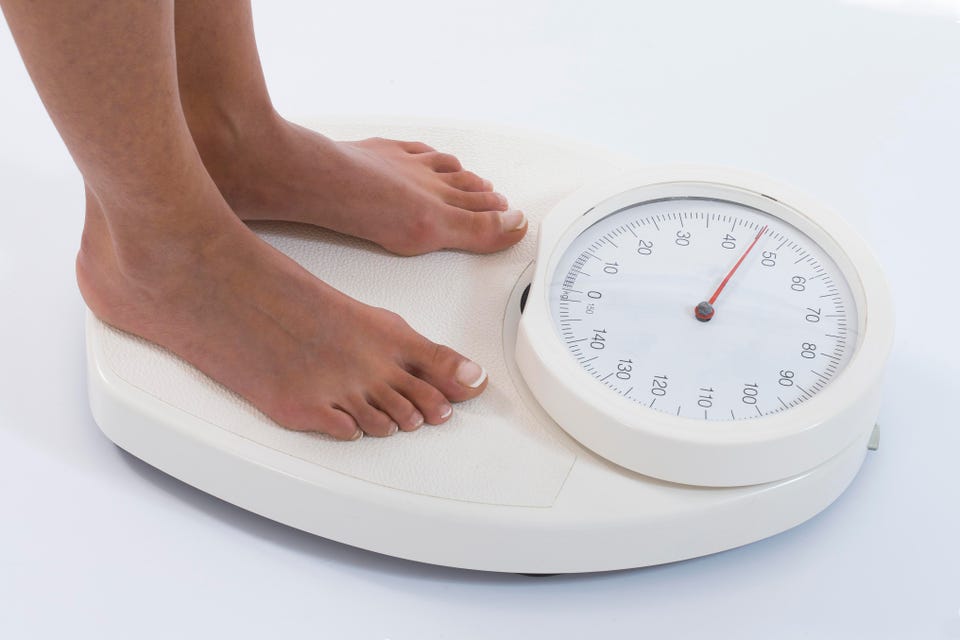Perimenopause Could Be A Risky Phase For Developing Eating Disorders


Woman on weight scale (Photo by: BSIP/Universal Images Group via Getty Images)
Universal Images Group via Getty Images
A recent study published in the journal Menopause found that women can experience body dissatisfaction during perimenopause and that could make them more vulnerable to developing eating disorders. While efforts to prevent eating disorders mainly provide support and resources for teenagers and adolescents, researchers say that women belonging to all age groups are just as susceptible.
Eating disorders are common psychiatric disorders and have been associated with high morbidity and mortality. According to a 2019 JAMA study, the estimated lifetime prevalence of eating disorders is one in five women (19.7%) and 1 in 7 men (14.3%) by the age of 40. Across women’s lifespans, 13% of them could develop eating disorders. This includes anorexia nervosa, bulimia nervosa, and binge eating.
Whereas the prevalence of eating disorders at midlife is roughly 3.5% and certain symptoms can be a lot more common at a prevalence of 29.3%. This includes weight-control behaviors like frequently counting calories and only consuming diet food items. Researchers hypothesize that midlife women can be vulnerable because perimenopause symptoms like depression, fatigue, and low mood have been linked to eating disorders.
In this study, researchers included 36 participants between the ages of 45-61 years old. They were a part of a larger clinical trial and had completed the Eating Disorder Examination Questionnaire. They then applied network analysis statistical models to delve into different reproductive ages and the structure of specific eating disorder symptoms. While far bigger studies are required to further investigate how vulnerable middle-aged women are to developing eating disorders, this study highlights how body dissatisfaction or a poor body image is the biggest risk factor.
In a press release, Stephanie Faubion, director of The North American Menopause Society (NAMS) said, “This study shows that similar to studies in young adults, dissatisfaction with body image remains a core feature of eating disorder pathology in midlife women. Specifically, fear of gaining weight and fear of losing control over eating habits are central symptoms of eating disorders in perimenopause and early postmenopause. These findings may help direct more targeted treatment strategies in women during midlife.”
Even though eating disorders have been associated with a lower quality of life, increased need for health care treatments, and high mortality rates, there is a severe lack of data on how this disorder manifests across various life stages. Also, eating disorders tend to reoccur or persist over long periods among the same individuals. The relapse of eating disorder cases has been reported to be as high as 30% for every diagnosis. Women are far more likely to experience multiple episodes of an eating disorder.
This makes it all the more challenging for researchers and clinicians to develop evidence-based strategies that could treat and prevent eating disorders. By increasing treatment coverage for all types of eating disorders, researchers estimate could help prevent 70.5 deaths per 100,000 individuals by the age of 40. Despite this, very few patients with eating disorders receive treatments and support. This makes it all the more vital to diagnose eating disorders among women of all age groups.
